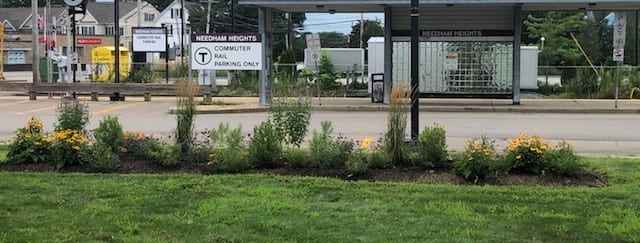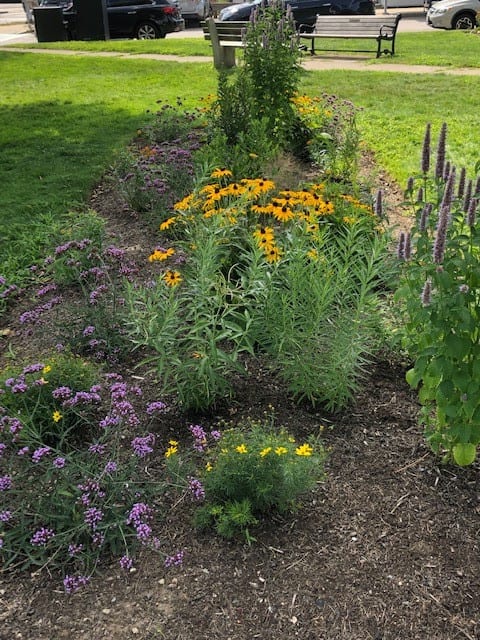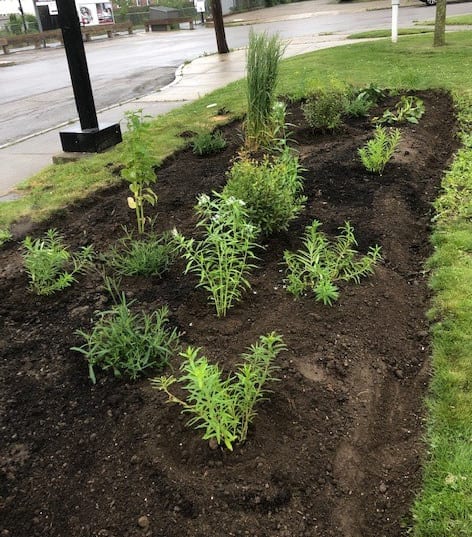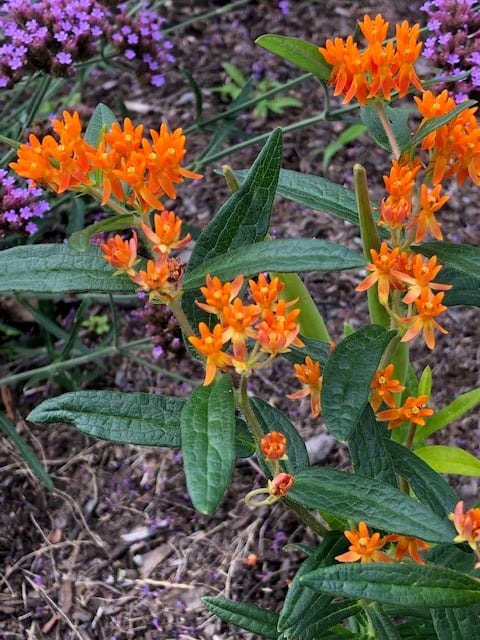by Maureen Sundberg
Marie Chieppo is a Certified Massachusetts Master Gardener, has an Advanced Certificate in Native Plant Design and Horticulture through the Native Plant Trust (formerly The New England Wildflower Society) and is a Design Consultant through the Massachusetts Design Council. She has been designing and installing beautiful and ecologically sound gardens for over 20 years. An ELA member for seven years, Marie has led Eco-tours and written articles for the ELA Newsletter.
You recently designed a native plant garden for the Town of Needham and completed the installation with a group of volunteers. Describe the overall project. How and why did you get involved?
The Native Plant Garden in Needham, MA was initiated by a collaboration between Needham’s Park and Forestry Division and myself to educate members of my community about the benefits and beauty of native plants. There was a public park in need of a facelift, so it was a perfect opportunity to create a native plant demonstration garden. As part of the project, we enlarged three garden beds that hadn’t been used in years. The space abuts a commuter rail station that hundreds of residents walk through every day. I had a captive audience!

Three garden beds that had been neglected for years are now a spot where commuters can watch wildlife as they wait for the train.
Which municipal organizations have responsibility for the site and what has been their involvement throughout the project?
As it turned out, the nurseries Needham has accounts with carried minimal native plants. After the design was completed and I was given permission to move forward, I had to raise funds through my community to acquire the plant material. Thanks to residents’ belief in me and affirmation that this was a valuable project, it was completed over a six-week period. Needham was very helpful supplying labor at various stages of the project. (I got dirty, too.) The remainder of the work was completed with the help of amazing volunteers, including my own teenagers.
Needham’s team provided screened loam and The Needham Garden Center donated the compost. I was determined to use leaf mulch rather than regular mulch to help with the gardens’ soil structure and overall health. My town doesn’t carry leaf much, nor did they have a vendor, so I raised funds for that as well.
What is the post-installation plan for site management?
I agreed from the beginning that I would take responsibility for the gardens’ upkeep. It’s a labor of love. The town has an irrigation system, but I felt the need to hand water for the first six weeks post planting. I was given a 100 ft hose that sits at the base of a tree and access to a town water source. People know where to find me every morning! The plants are now pretty much established, but I still check on them every couple of days because of the summer weather.

The chosen plant palette functions both as a magnet for pollinators and restful way station for people.
How have you planned for multi-season pollinator support? What plants provide late season pollinator support?
My design included pollinator plants that bloom from spring through fall. Evergreens (Ilex glabra) and grasses (Andropogon gerardii and Calamagrostis ‘Caspian’) were planted for winter interest. For late season pollinator support, I’m in the process of purchasing Aster novae-anglliae ‘Purple Dome’ and Solidago (goldenrod) ‘Fireworks’ via a special order that I will not have to raise money for. Rudbeckia fulgida (Black-Eyed Susan) is already present.
How has the project been received?
As work progressed and people noticed the changes taking place, they started to ask questions about the plants and were pleasantly surprised at my answers. Community members posted on social media notifying others that bees and butterflies can be viewed at the Native Plant Garden! A new diversity of birds can also be seen eating insects in the beds and enjoying the mini puddles of water left after watering. People sit on the benches and watch the wildlife that is now present in this new beautiful space. Relaxing and learning at the same time.
What are your future plans for the site?
The next step is to have one of our elementary schools help create a sign describing the benefits of native plants along with a key showing the names of the plants. Also, moving forward I hope to continue enlarging the beds and incorporating more shrubs for a greater diversity of habitats. I’d also like to incorporate more trees into the design to provide shade and a different micro-climate. The current design was created for plants that tolerate full sun and dry conditions.
***
Each author appearing herein retains original copyright. Right to reproduce or disseminate all material herein, including to Columbia University Library’s CAUSEWAY Project, is otherwise reserved by ELA. Please contact ELA for permission to reprint.
Mention of products is not intended to constitute endorsement. Opinions expressed in this newsletter article do not necessarily represent those of ELA’s directors, staff, or members.




